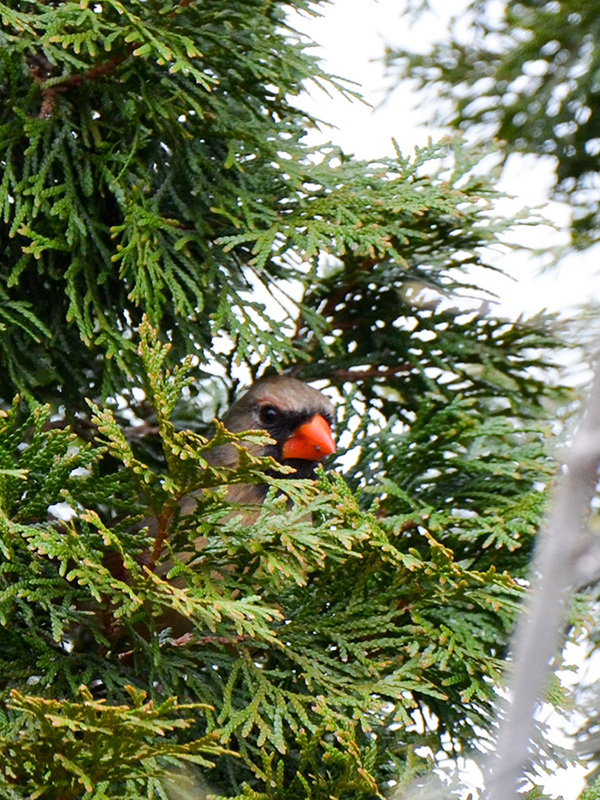
Birds need cover from predators and from severe weather. They also need places to perch and just to be.
As with most habitat features, I’m finding that the natural habitat we restore is more effective than most man-made features we could provide. It’s impossible, though, to totally recreate natural habitat in our yard, so some man-made features, such as bird houses, are still necessary.
Trees and shrubs
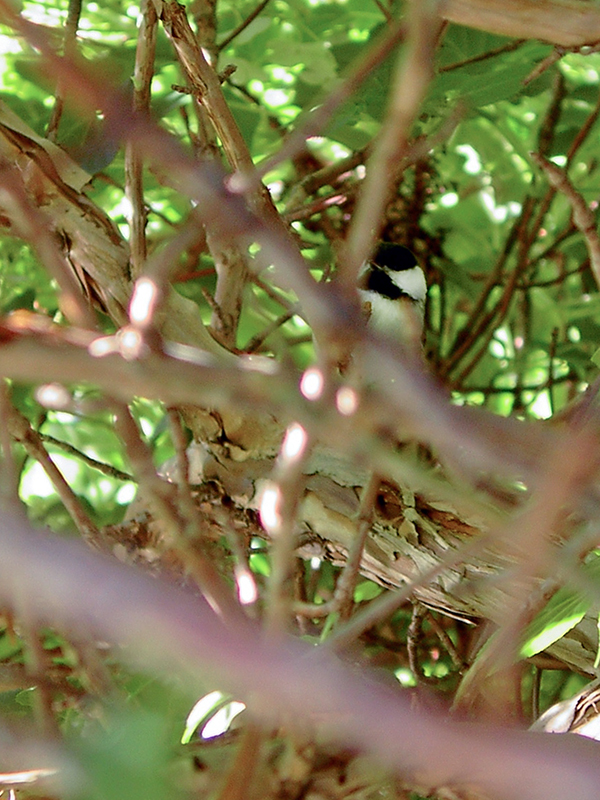
Here’s a “bird’s eye” view of cover. See the chickadee? This is a very different view of plants than we usually see. People see the leaves on the outside of the plant, but from the chickadee’s point of view, this must feel like a nice safe place to be.
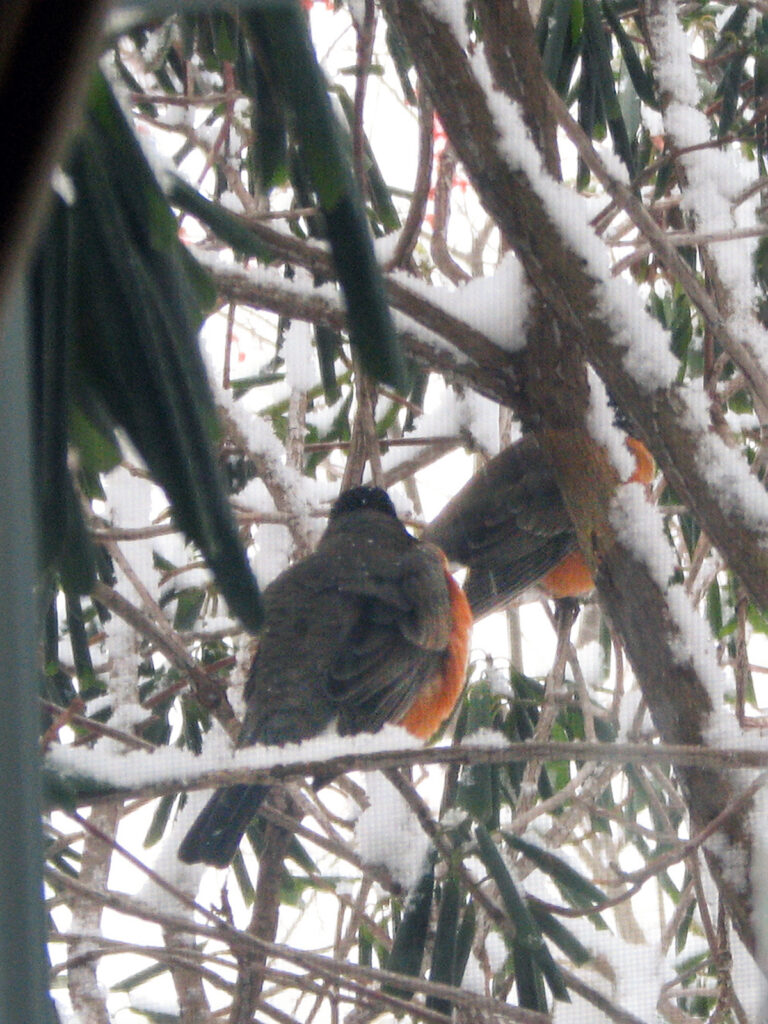
These rhododendrons outside our living room windows are another favorite place for birds to seek cover, especially in the winter.
I’m surprised they choose this because the leaves of the rhododendrons kind of fold up during the winter, so it doesn’t (to human me anyway) seem to have as good cover as evergreen plants, such as the hemlock.
(And yes, we do have some robins who seem to overwinter here in cold CNY!)
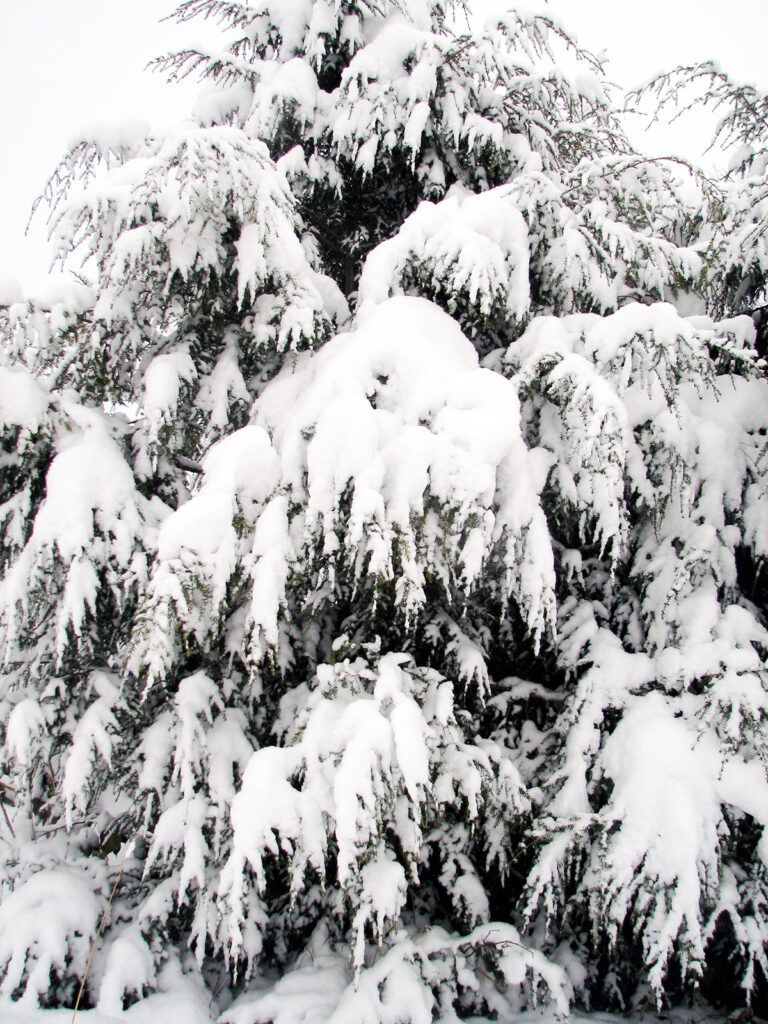
If I were a bird, I’d be inside this hemlock. To me, this seems like good cover, especially with snow adding another level of protection.
I’ve read that the temperature can be higher “inside” a snow-covered shrub than it is “outside.”
Dead trees and shrubs
Cavities in dead trees are another important source of cover (in addition to being nesting spaces in the summer).
We don’t have any dead trees large enough to have a cavity (we had to remove the one cavity we had), but when our sugar maple (Acer saccharum) is finally dead, we’ll have it cut to the tallest height that’s safe and plant trumpet vines (Campsis radicans) at its base. That should make a nice green totem with space for cavities.
Man-made cover
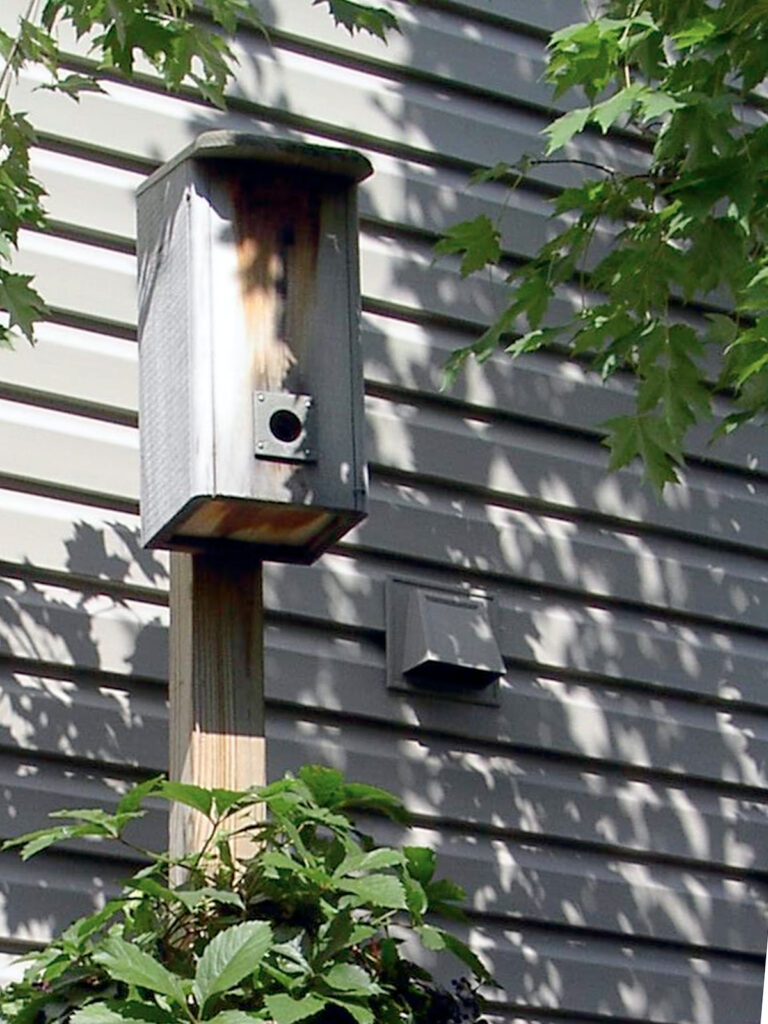
We installed a roost box many years ago. Note that the entrance hole is at the bottom, unlike nest boxes. Inside there are perches staggered along the side.
The idea is that a small flock of birds can crowd into such a space to share warmth. In nature, of course, they’d use tree cavities, but they’re in short supply in the suburbs.
I have no idea of whether this has been used or not since it’s installed at the side of the house we can’t see easily in the winter. We put it fairly high up on a pole and haven’t been able to get it down — a problem since it should be cleaned. Whether or not this is a useful addition to our habitat I’m not sure, but we should at least take it down and see.
A place to perch
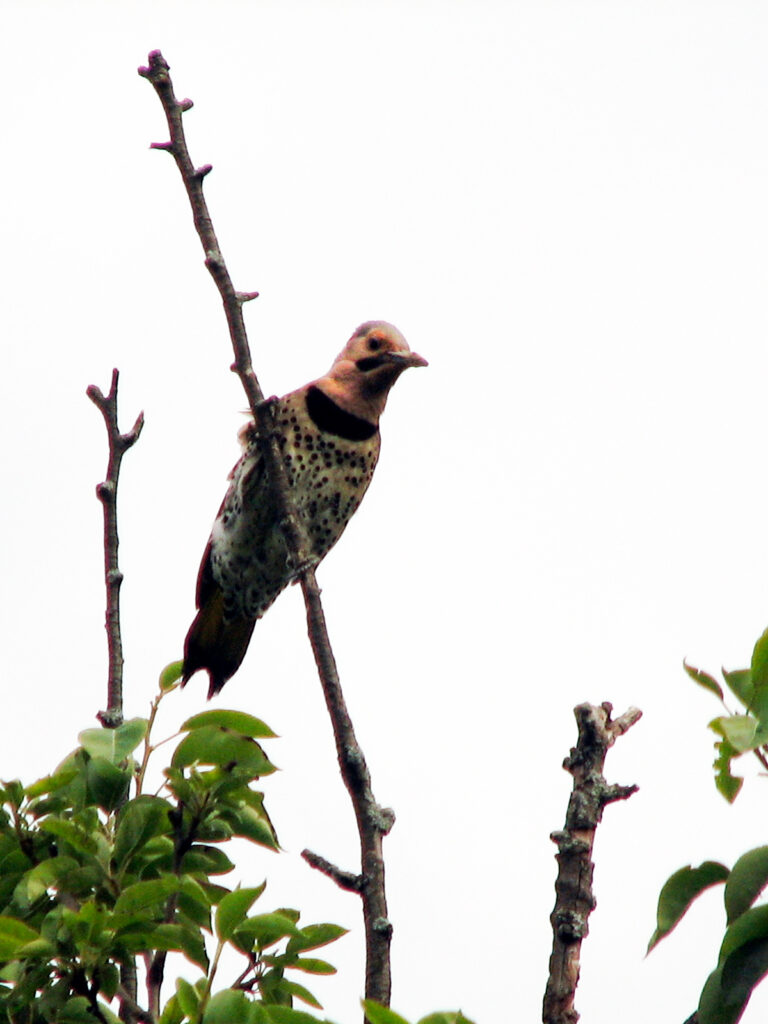
The more I observe birds, the more I see that they need places to sit, to look for food or for mates, and to declare their territory.
How many such places do lawn-dominated landscapes offer?
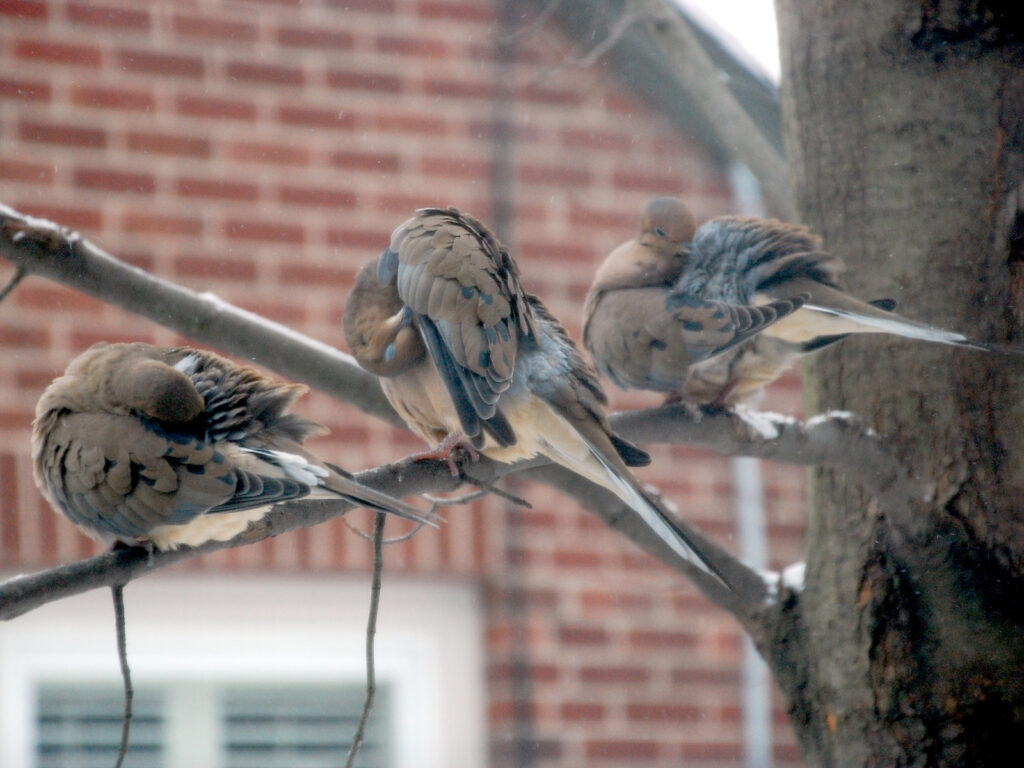
Grooming feathers is important to keep them in good flying condition. Birds need a good place to sit and do this. These mourning doves are using another favorite perching spot in our yard: the maple tree outside our kitchen window. This lower branch is pretty much dead (although the rest of the tree is healthy). I guess its lack of leaves makes it a good place to perch.
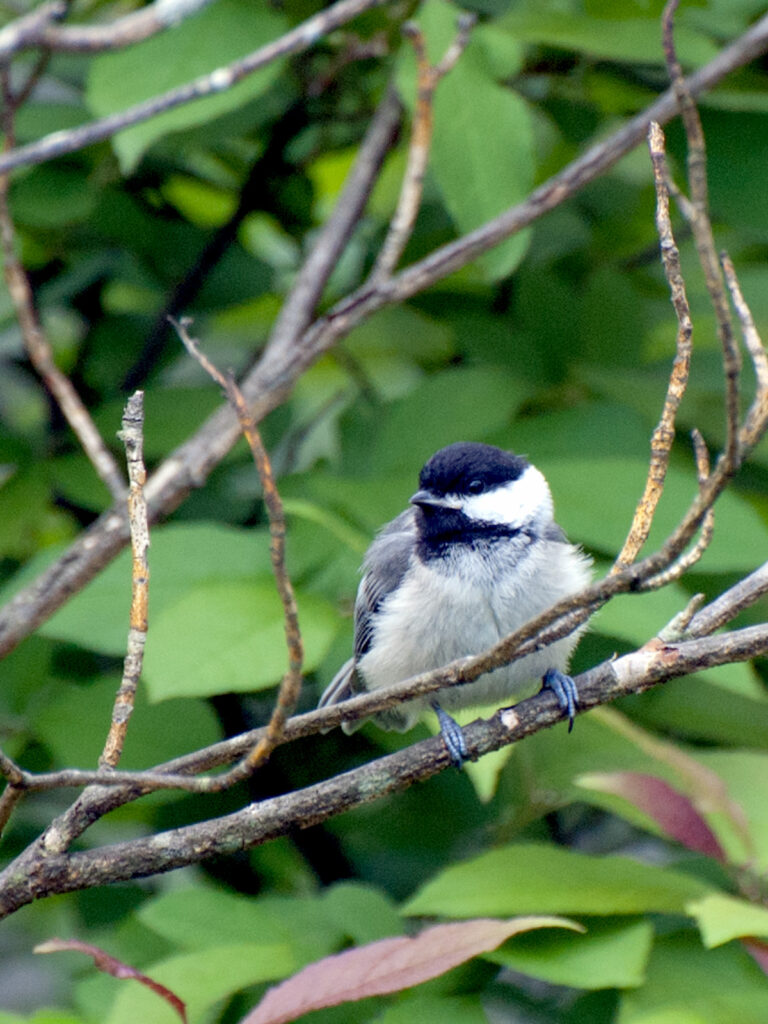
One of the favorite perching places in our yard was a dead pagoda dogwood, small enough that it wasn’t at all a safety hazard. Years ago, we probably would have removed it, but now with our new perspective we were still able to enjoy it, watching the chickadees, hummingbirds, and others use it as a convenient perch.
After many years of this service, we one day found it had toppled over. Fortunately, we now have a dead apple tree and a dead pear tree they can use!
Resources
- Conservation Northwest:
- Sierra Club:
Reflections
There was a handsome male mockingbird that sang his heart out every morning during the nesting season from the top of a tall Norfolk Pine tree. Last week the tree was cut down. The mockingbird and his song are gone. I can’t put a dollar value on the tree nor on the mockingbird nor on his song. But I know that I — and our whole neighborhood — have suffered a loss. I wouldn’t know how to count it in dollars.
~ Jacquelyn Hiller
Two-thirds of all the migrant songbirds observed in one study were found in shrubs and understory trees — the layers most often missing in the typical residential landscape.
~ Janet Marinelli, Brooklyn Botanic Garden publication
